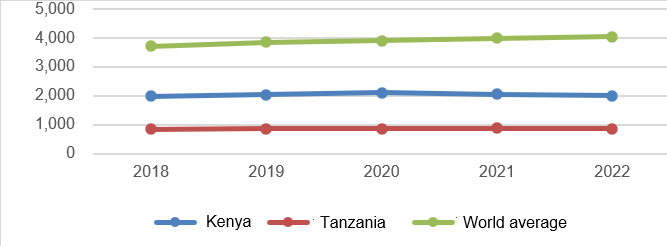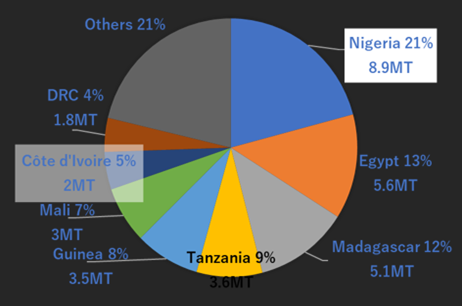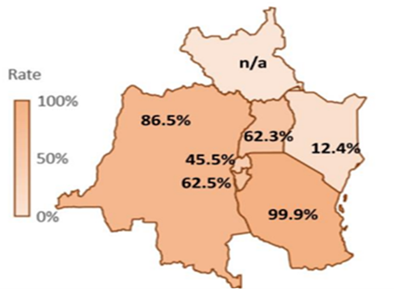Sector Overview
Although agriculture accounts for about 70% of the working population, the value added per farmer is lower than the world average and the low agricultural GDP growth (3.5% in 2021) and productivity are the challenges in Tanzania’s agriculture sector.
Agriculture is an important sector, representing about 1/4 of GDP, but in 2021, the agricultural GDP growth rate was low, at 3.5%, and increasing productivity is an issue to be addressed, as the value added per farmer is lower than the SSA average. FYDPIII aims to increase the productivity of agricultural products and their share in total export revenue from 13% to 19%. Banks' loans to agriculture have high growth potential although they remain low, accounting for 8-10% of the total, while they consist mainly of short-term loans. In addition, agricultural mechanization is limited, and there is still high dependence on animal and human power.

Value Added per Farmer (USD)
(Source: World Development Indicators)
Tanzania is one of Africa's leading agricultural countries and plays an important role as a regional food basket. In particular, the production of rice has continuously improved, and self-sufficiency has been achieved, but the unit yield is still low at 3 t/ha. In addition, much of agriculture is rainfed and highly vulnerable to climate change.

Rice Production Share (2023)
(Source: FAOSTAT)

Rice Self-Sufficiency Rate in EAC Countries
(Source: EAC Rice Development Strategy)
The irrigated area increased from 460,000 ha in 2015 to 720,000 ha in 2024, but the potential irrigated area is about 29.4 million hectares, so there is much room for development. On the other hand, because of inadequate operation, maintenance, and management, about 50% of the existing irrigation facilities are not fully functioning due to aging and poor maintenance and management.
The fisheries sector accounts for 1.8% of GDP and employs four million people (including indirect workers). However, related infrastructure such as landing sites, storage facilities and processing facilities are not well developed. Value chain development and post-harvest losses (for example, half of the small fish called dagaa caught in Lake Victoria are lost) are issues to be addressed.
Other issues include low fishing technology, insufficient research on marine resources, and overfishing due to poaching.
Livestock production represents 7% of GDP (27% of agricultural GDP) and employs 33% of the population. Tanzania has the third largest livestock population in Africa, making it one of the most important and rapidly expanding industries in recent years. Challenges include climate change-related risks such as erratic rainfall patterns and rising temperatures, insufficient investments from the public and private sectors (with the current level of investment being about 1/5 of the required amount), livestock diseases, quality control of livestock products, low productivity, and greenhouse gas emissions (especially methane emissions, which contribute significantly to climate change).





scroll